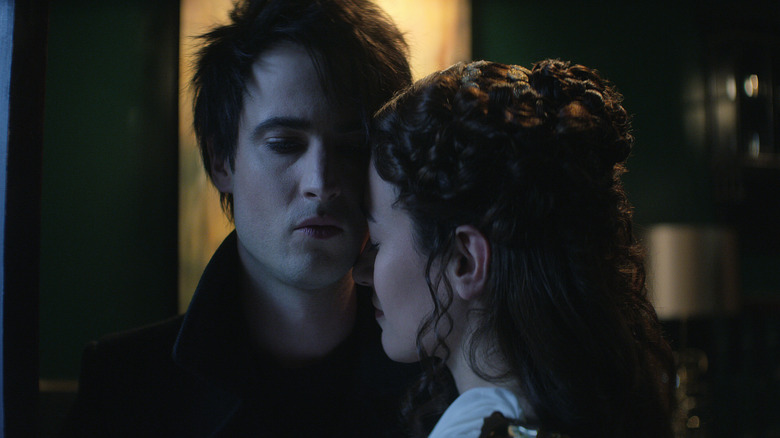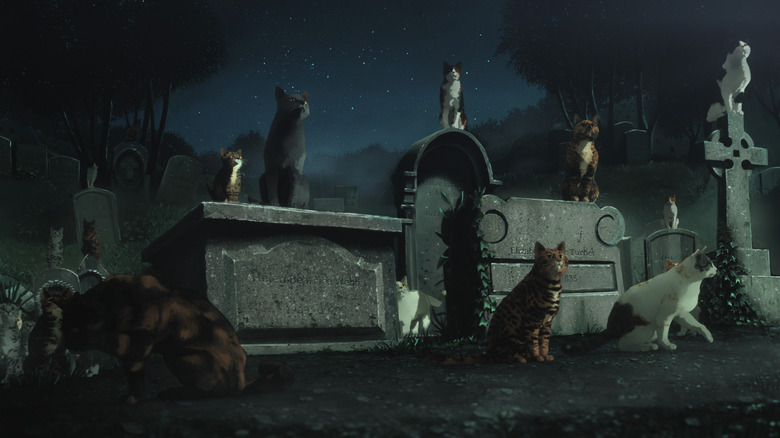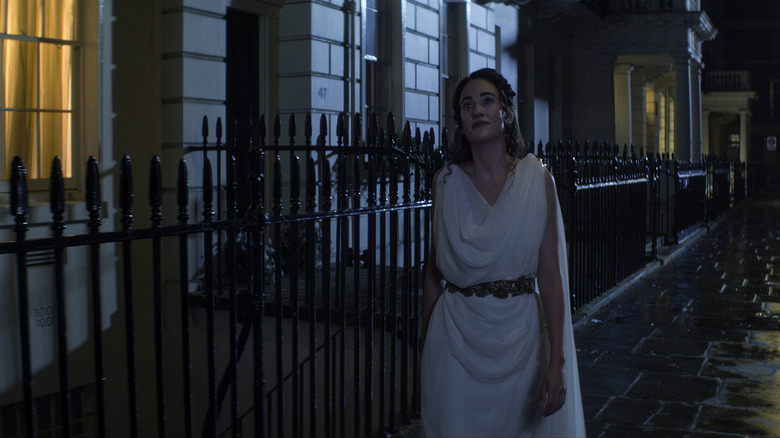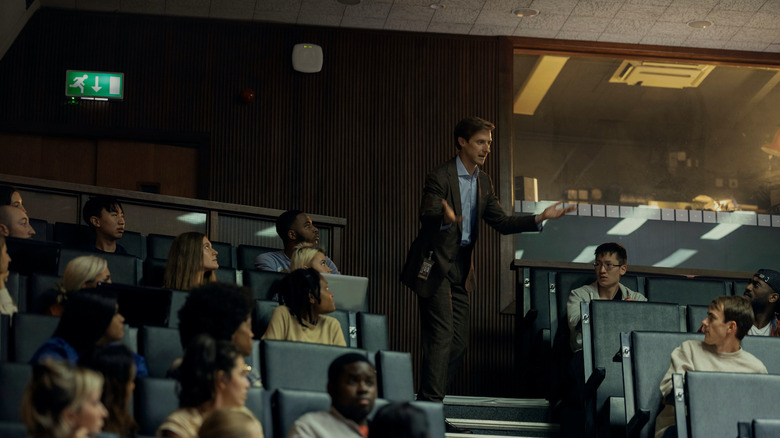In The Sandman's Bonus Episode, The Netflix Series Finally Feels Inspired
Netflix's "The Sandman" adaptation was, against all odds, good. In fact, it might still be the closest thing to a great Neil Gaiman adaptation, if it can only navigate the stumbling blocks of a stilted supporting cast, an awkward leading man, and an even more awkward wardrobe. But Netflix's "The Sandman" is, after all, limited by reality and those limits could sadly be felt when comparing it to the surreal, imagination-fueling pages of Gaiman's original graphic novels.
Perhaps that's why the Netflix series was at its best when it embraced the medium of television that it was working in an otherwise let Gaiman's source material speak for itself. We see this in its first perfect hour, "The Sound of Her Wings," and we see it in its next perfect hour, the bonus episode of "The Sandman" given a surprise release this past Friday.
The two-part bonus episode, which adapts two stories from Gaiman's "Dream Country" collection, breaks form, offering separate tales set in the world of "The Sandman" but leaping between mediums (animation and live-action) and genres (the magical realist and the mythic). And perhaps its greatest strength is that the episode rarely actually shows Dream (Tom Sturridge) in all his dark, spiky-haired glory, instead deepening his reputation as an otherworldly figure who only occasionally appears at the edges of our dreams and nightmares.
'Dream of a Thousand Cats' tests the limits of the medium
"The Sandman" might have a reputation as a horror comic, but I always liked the series best when it transcended the boundaries of genre to deliver something ... stranger, softer, or sadder. Many of its strangest moments can be found in "Dream Country," the least interconnected of Gaiman's original graphic novels, an anthology collection telling independent stories set in the world of the Endless that show the power that dreams can have.
The first of the "Dream Country" stories to be adapted in "The Sandman" is "Dream of a Thousand Cats," a curious little story that takes place during a nighttime gathering of cats, who have left the comfort of their homes to listen to an imposing Siamese cat regale them with a world-changing dream she had. In this dream — which she received after embarking on a great quest through the Dreaming — she learned that the cats used to be majestic, giant beings that hunted and ruled over humans, until enough humans dreamed of a different world. But if enough cats believe her, and dream the same dream, they can transform the world into what it once was. The Siamese cat, now living in the wild after losing her kittens at the hands of her owners, urges them all to dream this dream, but only a sweet little kitten tells her she believes her. It's enough, the Siamese cat says, and the day begins again as it always has ... though maybe not for long.
Directed by Hisko Hulsing, best known for his work on the acclaimed Prime Video series "Undone," delivers his same brand of eye-popping, visually astonishing animation with "Dream of A Thousand Cats," which uses a combination of drawn 2D animation and 3D animation. The result is something otherworldly — a feeling that had been somewhat missing from the rest of the Netflix series. It's always refreshing to see a series break form like this, but animation is so uniquely suited to telling a story about dreams and inhuman concepts that it's almost a shame that the Netflix series doesn't take advantage of it more. "Dream of a Thousand Cats" is proof that not only can it be done, but it can achieve an eeriness that live-action can rarely reach.
'Calliope' finds inspiration in real life
Catherine Smyth-McMullen writes both stories in the two-part episode with a light deference for Gaiman's original material, but with a keen talent for streamlining both stories to better suit TV. However, it's the latter story, "Calliope," that really benefits from her taking creative license.
In Gaiman's original comic, "Calliope" was a not-too-subtle metaphor for the way women are brutalized and reduced to objects to benefit "great men" and "great art." But it's a story that gains even more power in the post-Me Too era, and one that Smyth-McMullen reworks to be more tasteful (no more graphic rape scenes, no more constant nudity) and to give more agency to its brutalized central character. Gaiman's original comics were not lacking for shocking imagery, but the intensity of its shocks was more primal than visual — the original's infamous "24 Hours" story wasn't disturbing for its gore (though there was plenty of it), but for how it managed to feel invasive both emotionally and psychologically. That's where Netflix's adaptation of "24 Hours" fell flat — because TV is inherently voyeuristic in the way that graphic novels aren't quite. With Calliope," Smyth-McMullen is aware of this, and astutely conveys the rape scenes with a few loaded images: a knock on the door, a bloody scratch on a cheek.
The story follows the Greek muse Calliope (Melissanthi Mahut), who is imprisoned and regularly raped by a beloved author Erasmus Fry (Derek Jacobi) to give him inspiration for his stories. Erasmus gifts her inspiration to struggling author Richard Madoc (Arthur Darvill), who at first balks at "taking inspiration by force" as Erasmus suggests, and instead tries to woo her with dresses and perfume. But Calliope only demands her freedom and Richard, driven desperate by impatient publishers, assaults her and immediately churns out his acclaimed second book.
There are plenty of notes of irony throughout this harrowing half-hour that combines Greek mythology with a sharp contemporary tale: Richard proudly proclaims himself a feminist author for the "strong female character" that people praise in his book while pretending to himself that Calliope is his partner and not his prisoner. Reality bleeds through into this story in a way that Gaiman might not have been able to predict when he wrote it in 1990, but the story's incredible prescience coupled with strong performances from Darvill and Mahut make "Calliope" a standout.
To the future...?
Doubts have been cast as to a "Sandman" season 2, which would be a real shame now that the series has finally found its groove with this bonus episode.
Perhaps this is how the series should be adapted from now on — as independent stories set in this dark, beautiful, terrifying world, where Dream flits around the background, bending the rules of his reality just as the show bends the rules of its genre.
And then perhaps the budget could be used on getting Dream a better coat.



